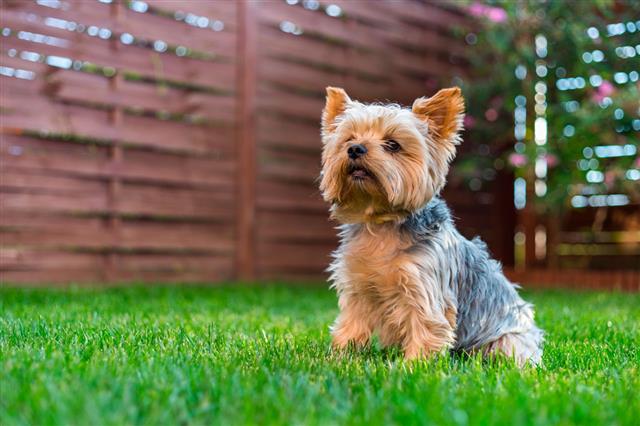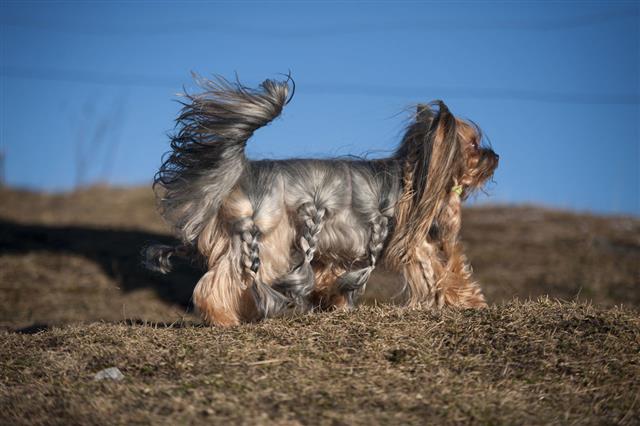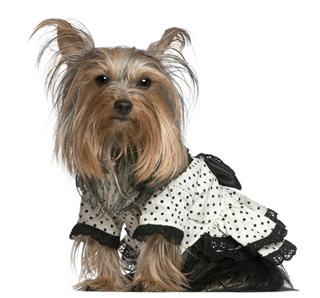
The debate of Silky Terrier vs. Yorkshire Terrier often stems from the misconception that they are one breed because of the remarkable similarity in their appearance. To clear things up, we examine both breeds…
Most Distinct Feature!
Silky Terriers have erect, V-shaped ears set high on the head. While the Yorkies have erect, V-shaped ears, they are turned slightly outwards.
Both Silky Terriers and Yorkshire Terriers make wonderful loving pets. The differences between these seemingly similar breeds are subtle. Possibly the most prominent difference between the two breeds is that the Silky is larger and the coat of the Yorkie is longer. To allow you to decide for yourself, here are details about both breeds.
Silky Terrier vs Yorkshire Terrier


Physical Traits |
|
|---|---|
| The Silky/ Sydney Terrier is a small, low-set dog, but longer than a Yorkie. Silkies are approximately 9 – 10 inches tall. | The Yorkshire Terrier is a small dog and shorter than the Silky Terrier. Yorkies are approximately 6 – 7 inches tall. |
| Silkies have a flatter, wedge-shaped skulls – slightly longer than the muzzles and have almond-shaped eyes. | Yorkies have a dome/ round shaped skull and medium-sized round eyes. Their muzzles are comparatively shorter. |
| They have high-set tails, which are generally docked*. | They have comparatively lower-set tails (but still above the back), which are also docked. |
| Silkies are sturdier dogs, and at around 8 – 10 lbs, weigh slightly more than Yorkies. | Yorkies are tiny “toy” dogs, with fine bone structure and weigh around 7 lbs. |
| Silkies generally have slate blue/ pigeon blue/ silver blue or silver coats with tan markings. Some have copper/ red markings. | Yorkies generally have slate blue or tan coats. The blue is more on the tail and body, while the head is tan. |
Temperament |
|
| Silkies are a curious, intelligent, brave, and affectionate breed. They have a cheerful temperament, and are alert, quick and playful! | Yorkies are a highly energetic breed, and also extremely loyal, loving and courageous. They are friendly dogs and are great as pets. |
| Silkies are a bit more aggressive than Yorkies, and so training them requires patience and a firm hand, but they are eager to learn and pick up things pretty fast if they want to. | Yorkies are very willing to learn, and hence are easier to train and are tough to housebreak. Reward-based positive training works well with the Yorkie. |
| Silkies are more energetic and require more exercise on a daily basis. They require long walks and considerable exercise to keep them from getting restless. | Yorkies are also extremely playful, but they get tired more easily than Silkies, and require less exercise on a daily basis compared to the Silkie. |
| They are generally good pets for children as long as they know they have a leader. If they believe they are the leader, they may become more aggressive towards children as well as strangers. | Yorkies are gentler than Silkies and make excellent pets for kids. They are extremely affectionate and trustworthy. But like Silkies, they can become wary of strangers. Modern positive training methods work well. |
| Silkies are enthusiastic in nature and also curious, and they take well to traveling. | Yorkies can get possessive and over-protective if not trained properly. They travel well. |
| Although tiny, Silkies make good watchdogs and also get along well with other animals/ pets. | Yorkies are generally sweet-tempered, but may get distrustful of others if their needs are not met. |
Grooming/Health Issues |
|
| The major problems this breed is prone to are tracheal collapse, diabetes, and epilepsy. Other niggling concerns include intervertebral disc disease, Legg-Calvé-Perthes disease, elbow dysplasia, and patellar luxation. | Yorkies are more prone to tooth decay (dry food and bones should be preferred), bronchitis, fractures (delicate bone structure), slipped stifle, herniated disks (which can cause paralysis), as well as eye infections. |
| Silkies have a single coat, and they almost never shed. | Yorkies, too, have a single coat, longer than Silkies, and they don’t shed much either. |
| Silkies require detangling and brushing on a daily basis, and frequent trimming and baths to keep their coat in good condition. After a bath, the coat needs to be dried thoroughly. | Yorkies require weekly detangling and brushing, frequent trimming and bathing. Since they have a lot of hair on their head, it needs to be tied up to provide better visibility. |
*Docking is banned in many parts of the world.
Both these are distinct breeds with unique temperaments and their own set of health problems. But at the same time, both are equally intelligent and make for lovely and adorable companions when given proper training.
There are breed rescues in almost every state. For example, check out this Silky Terrier rescue group. See this wonderful Yorkie Rescue for another example.




























